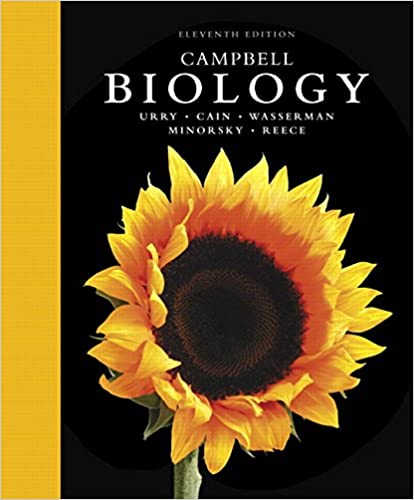
Campbell Biology 11th Edition by Lisa Urry,Michael Cain,Steven Wasserman,Peter Minorsky,Jane Reece
Edition 11ISBN: 978-0134093413
Campbell Biology 11th Edition by Lisa Urry,Michael Cain,Steven Wasserman,Peter Minorsky,Jane Reece
Edition 11ISBN: 978-0134093413 Exercise 8
How Does DNA Content Change as Budding Yeast Cells Proceed Through Meiosis When nutrients are low, cells of the budding yeast ( Saccharomyces cerevisiae ) exit the mitotic cell cycle and enter meiosis. In this exercise you will track the DNA content of a population of yeast cells as they progress through meiosis.
How the Experiment Was Done Researchers grew a culture of yeast cells in a nutrient-rich medium and then transferred them to a nutrient-poor medium to induce meiosis. At different times after induction, the DNA content per cell was measured in a sample of the cells, and the average DNA content per cell was recorded in femtograms (fg; 1 femtogram = 1 × 10 15 gram).
Data from the Experiment
Interpret the Data
Given the fact that 1 fg of DNA = 9.78 × 105 base pairs (on average), you can convert the amount of DNA per cell to the length of DNA in numbers of base pairs. (a) Calculate the number of base pairs of DNA in the haploid yeast genome. Express your answer in millions of base pairs (Mb), a standard unit for expressing genome size. Show your work. (b) How many base pairs per minute were synthesized during the S phase of these yeast cells
How the Experiment Was Done Researchers grew a culture of yeast cells in a nutrient-rich medium and then transferred them to a nutrient-poor medium to induce meiosis. At different times after induction, the DNA content per cell was measured in a sample of the cells, and the average DNA content per cell was recorded in femtograms (fg; 1 femtogram = 1 × 10 15 gram).
Data from the Experiment

Interpret the Data
Given the fact that 1 fg of DNA = 9.78 × 105 base pairs (on average), you can convert the amount of DNA per cell to the length of DNA in numbers of base pairs. (a) Calculate the number of base pairs of DNA in the haploid yeast genome. Express your answer in millions of base pairs (Mb), a standard unit for expressing genome size. Show your work. (b) How many base pairs per minute were synthesized during the S phase of these yeast cells
Explanation
In meiosis, the diploid (2N) mother cell...
Campbell Biology 11th Edition by Lisa Urry,Michael Cain,Steven Wasserman,Peter Minorsky,Jane Reece
Why don’t you like this exercise?
Other Minimum 8 character and maximum 255 character
Character 255


